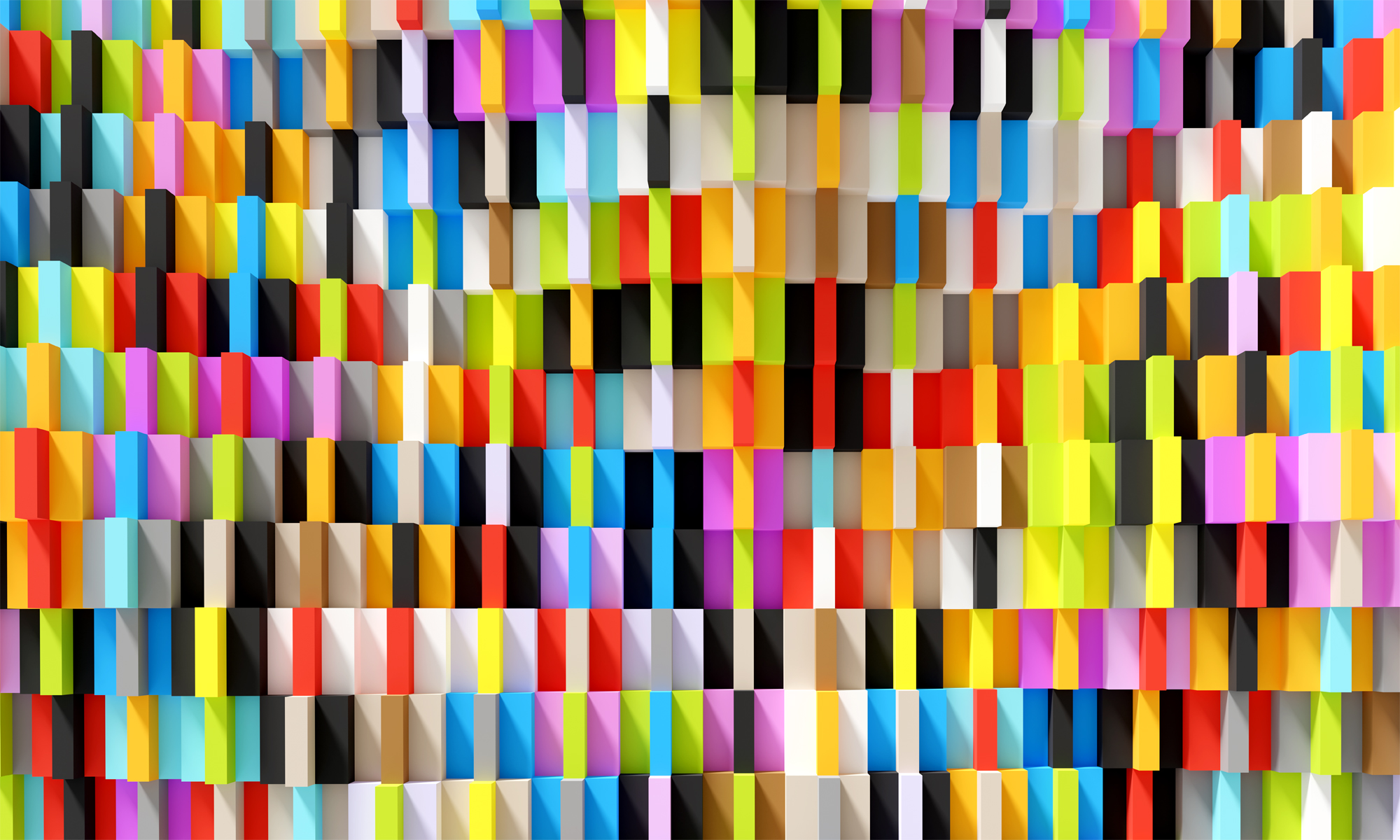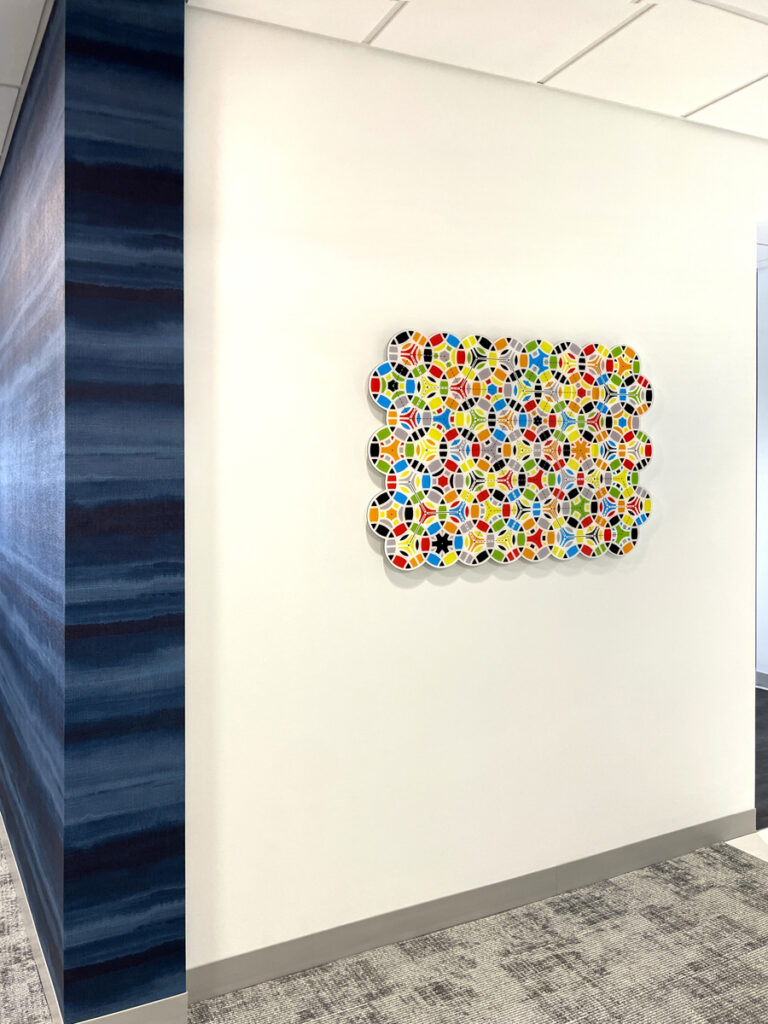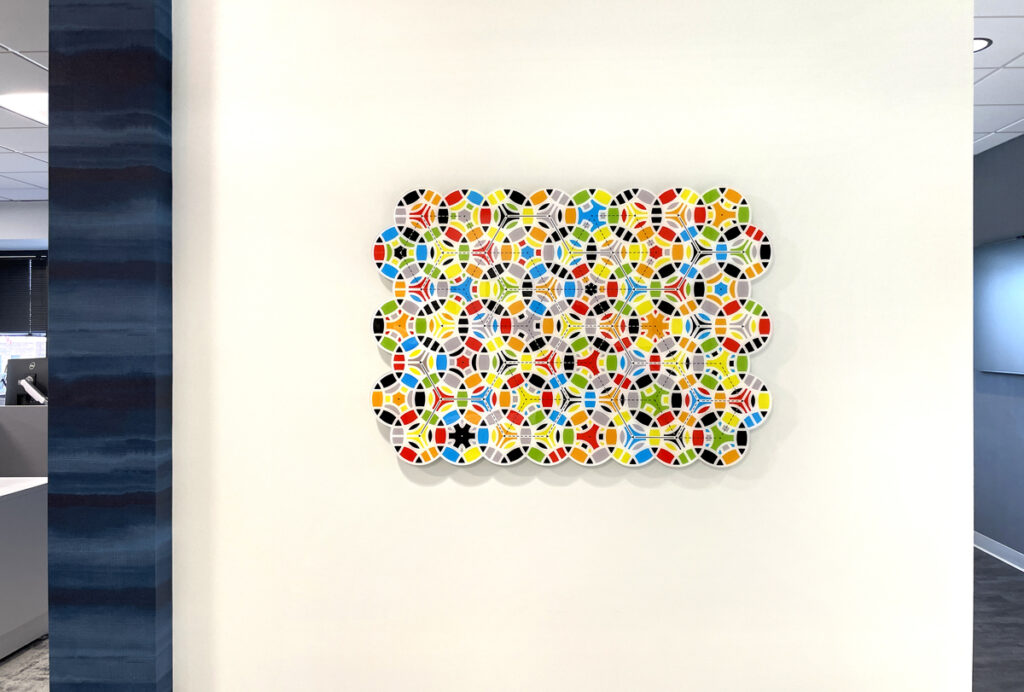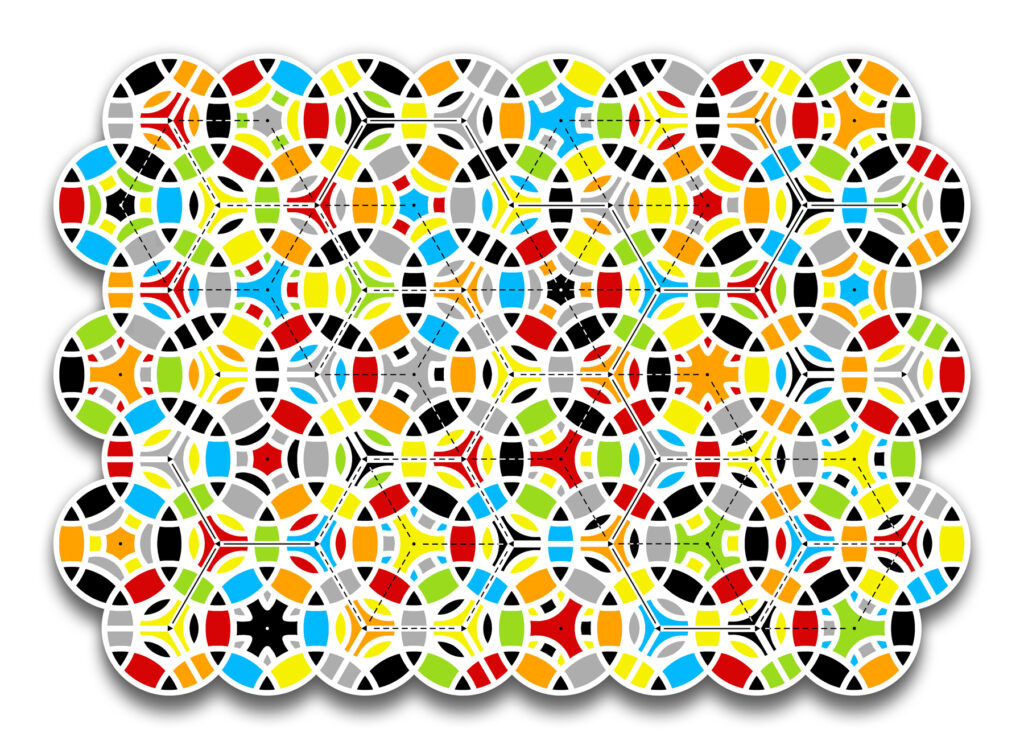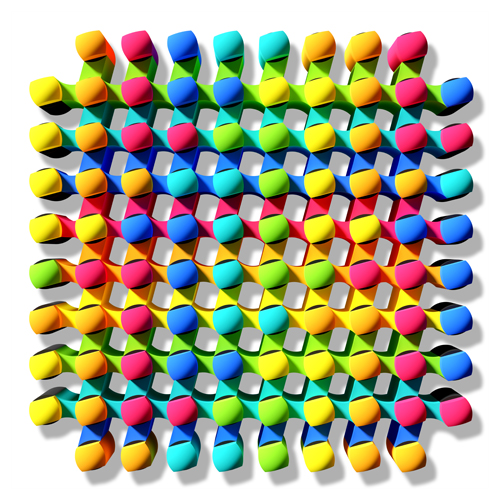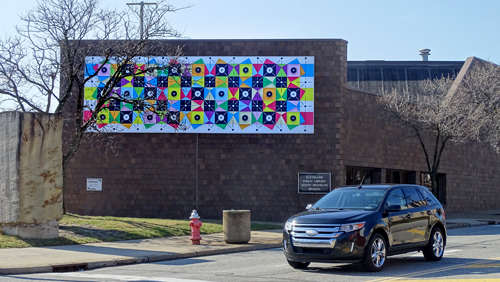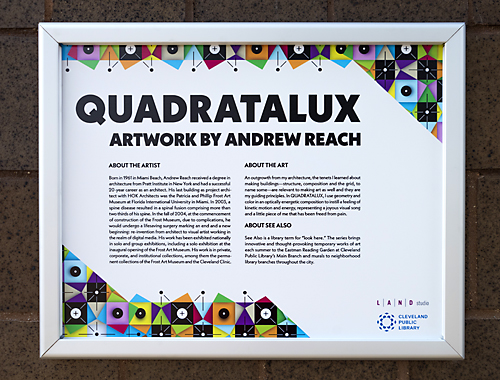Click on images to enlarge (except mobile devices)
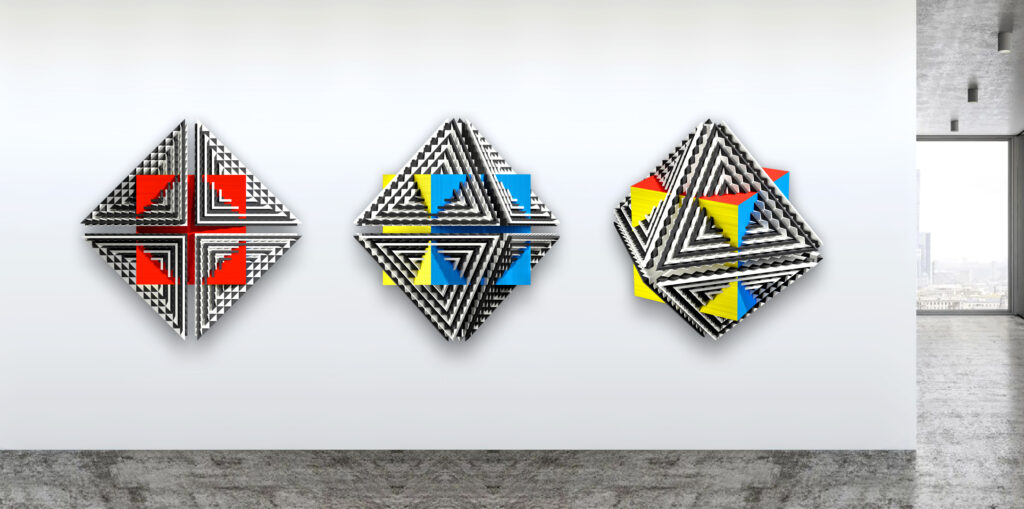
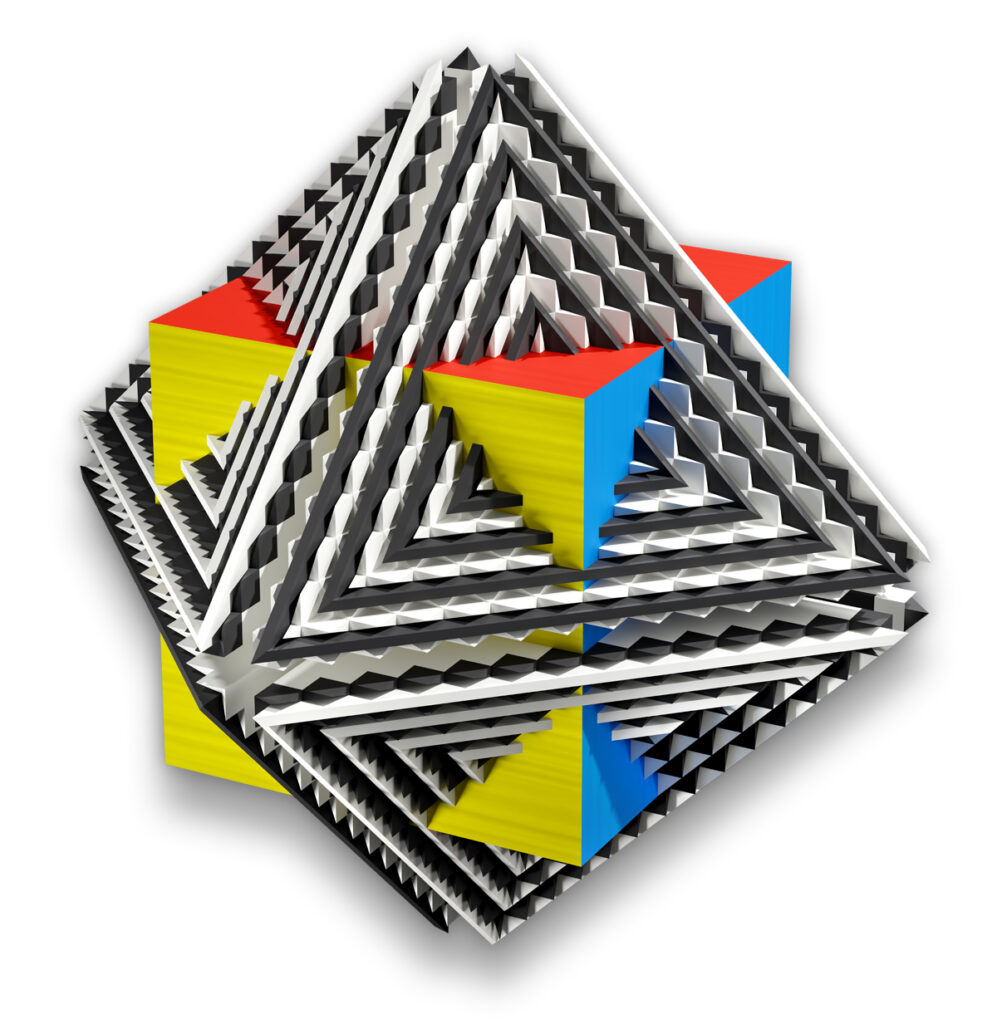
CUBUS ET OCTAEDRUM II.I
(Perspective View)
uv cured inkjet on acrylic mounted to composite aluminum and cut out on cnc router
dimensions variable, 45″h x 42.75″w overall, edition of 3
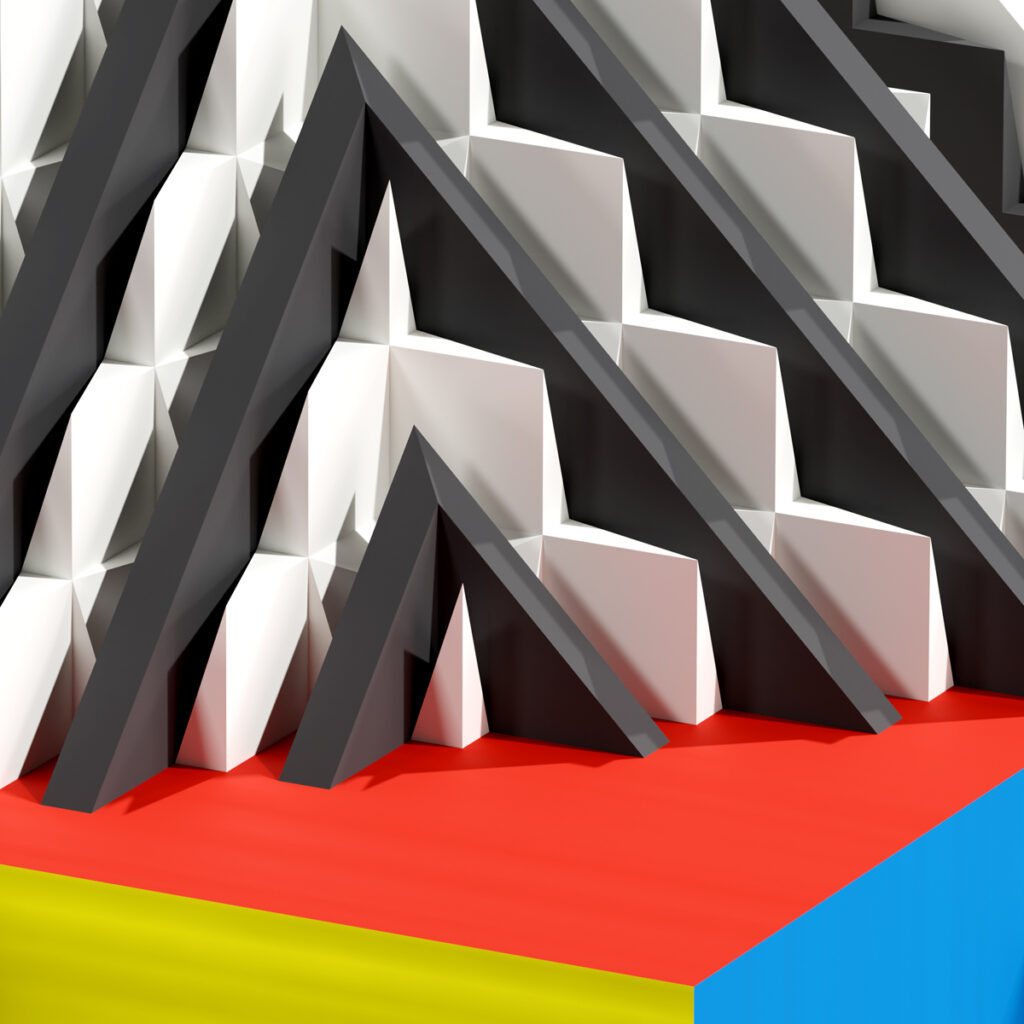
Detail of CUBUS ET OCTAEDRUM II.I
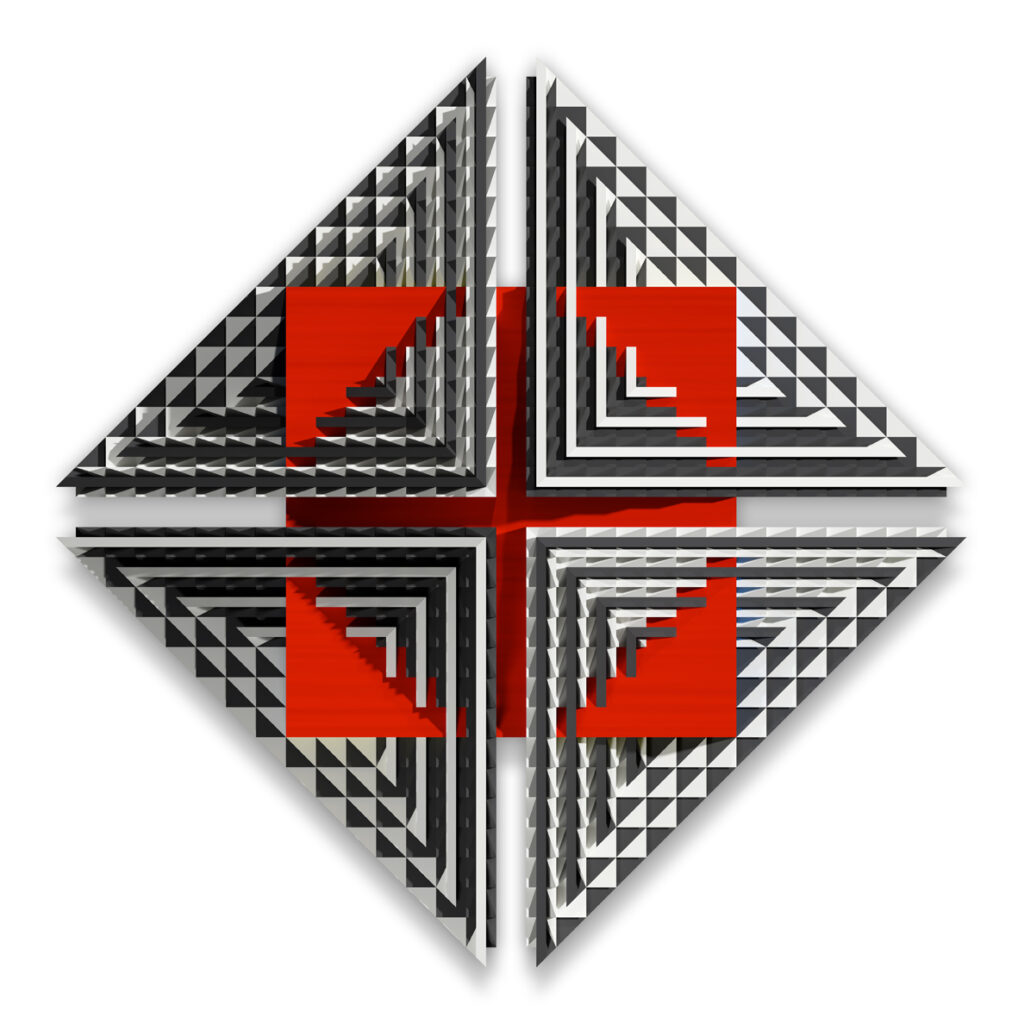
CUBUS ET OCTAEDRUM II.II
(Orthographic Top View)
uv cured inkjet on acrylic mounted to composite aluminum and cut out on cnc router
dimensions variable, 45″h x 45″w overall, edition of 3
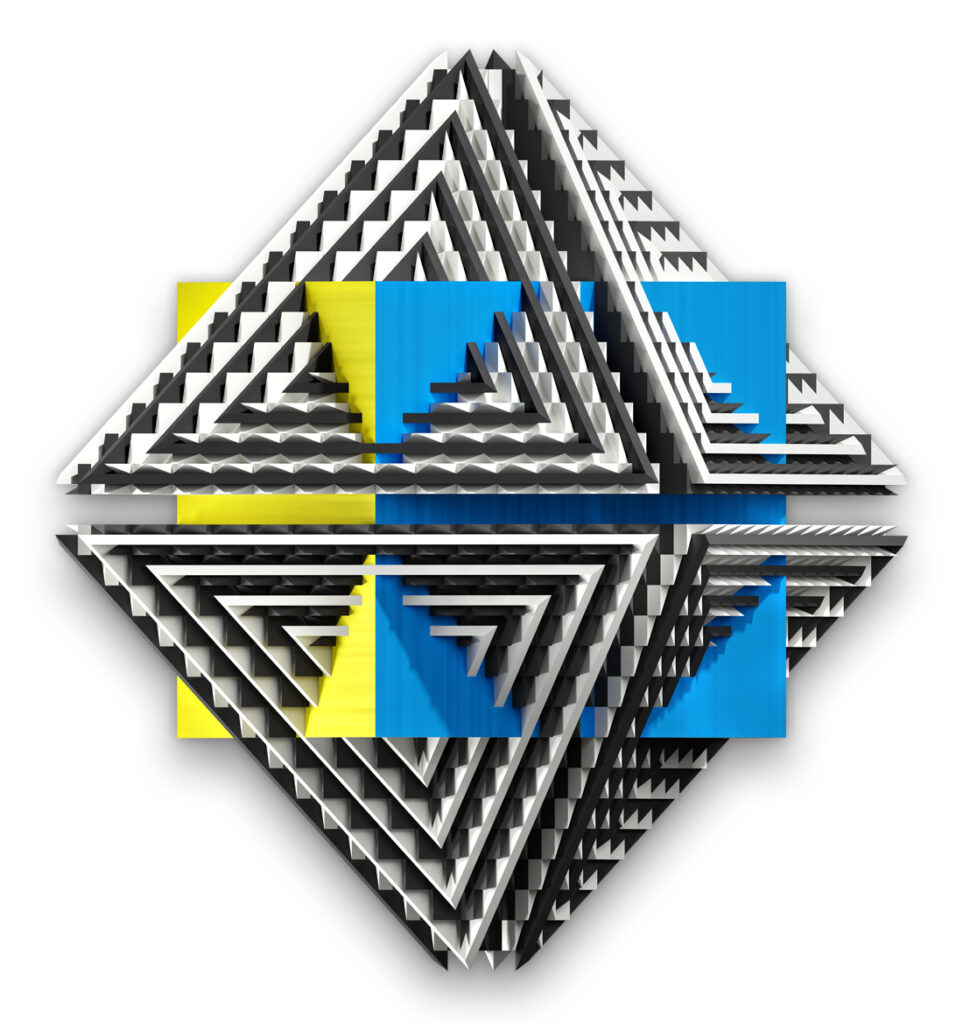
CUBUS ET OCTAEDRUM II.III
(Orthographic Side View)
uv cured inkjet on acrylic mounted to composite aluminum and cut out on cnc router
dimensions variable, 45″h x 41.75″w overall, edition of 3
CUBUS ET OCTAEDRUM is a study of platonic solids, in this instance, the cube and the octahedron. We all know what a cube is and for those who might not know, an octahedron is an 8 faced polyhedron. A polyhedron is simply a solid figure with multiple faces typically with more than 6.
I’ve been going back to my roots as an architect, thinking about the basics of geometry. I loved geometry as a child and knew by the time I was in high school that what I wanted to be was an architect. So working in 3D again, I’m revisiting the platonic solids that so fascinated me early in life.
With CUBUS ET OCTAEDRUM, I started with the thought of turning the square pyramids I’ve been creating made from stepped cubes into an Octahedron which is simply two square pyramids back to back. On a side note, a square pyramid like the Great Pyramid of Giza is not a platonic solid but that’s too complicated to get into here without boring you to tears. Then I wanted to up the stakes and add another platonic solid, the cube that resulted in this intervention of the cube expanding out of the octahedron or it could be looked at as the octahedron growing around the cube. I also sculpted the blocks, carving into them to accept the sloping fins instead of sitting on top of the blocks. The fins connected together form triangles. I also split the octahedron up into 8 individual triangular sections further accentuating these sloping triangles.
In this second iteration, I broke the cube into primary colors with the Octahedron in black and white.
